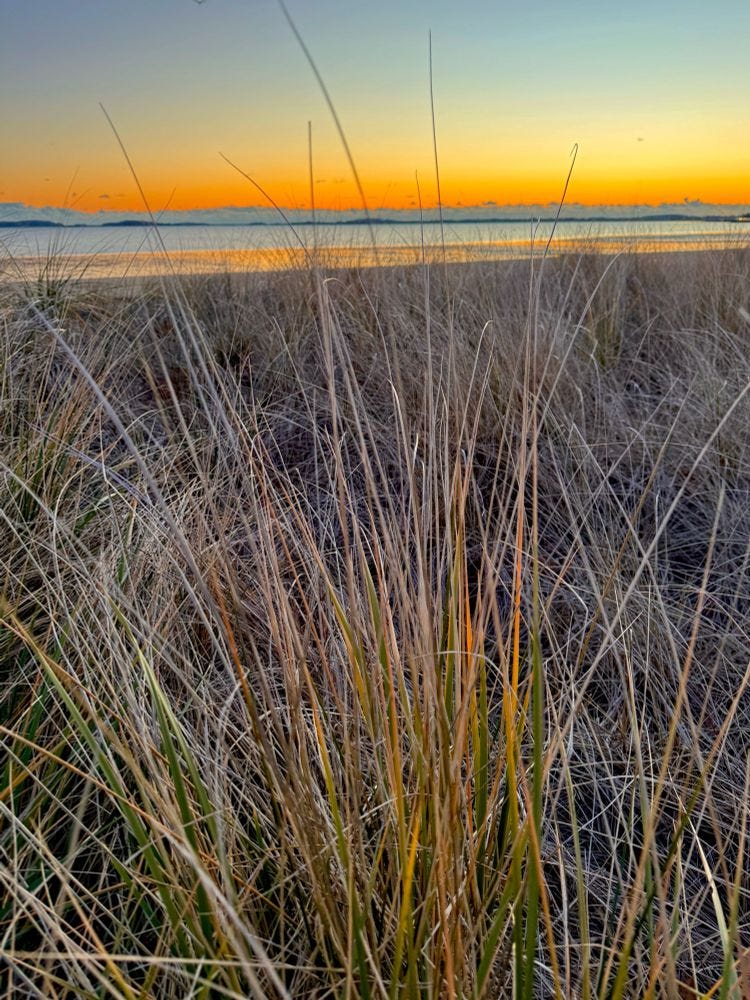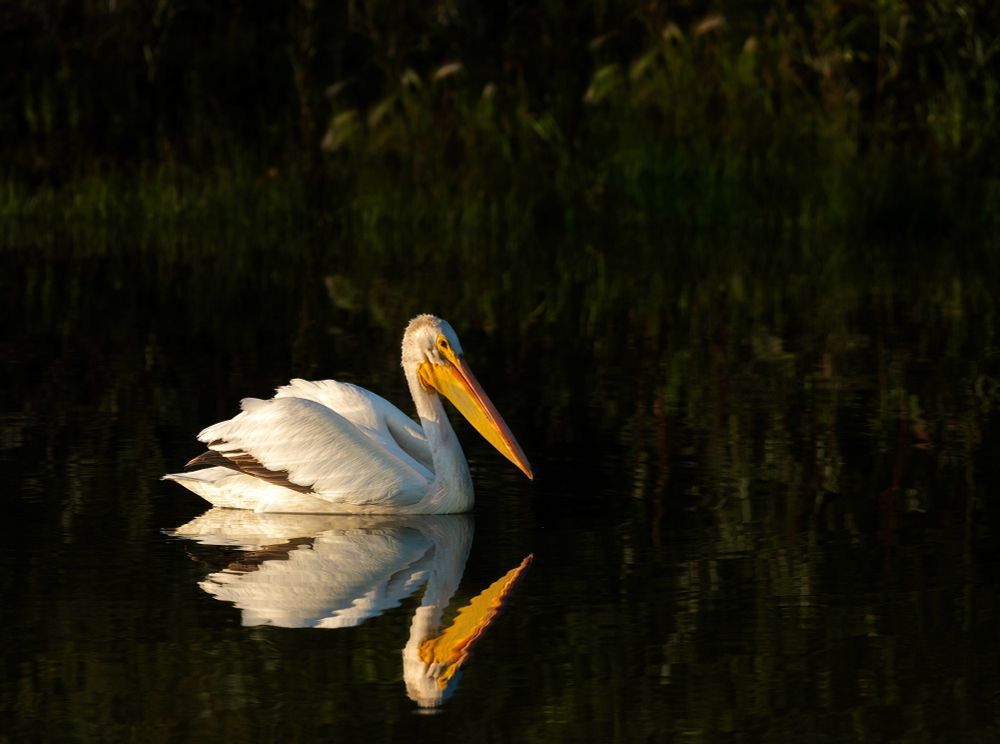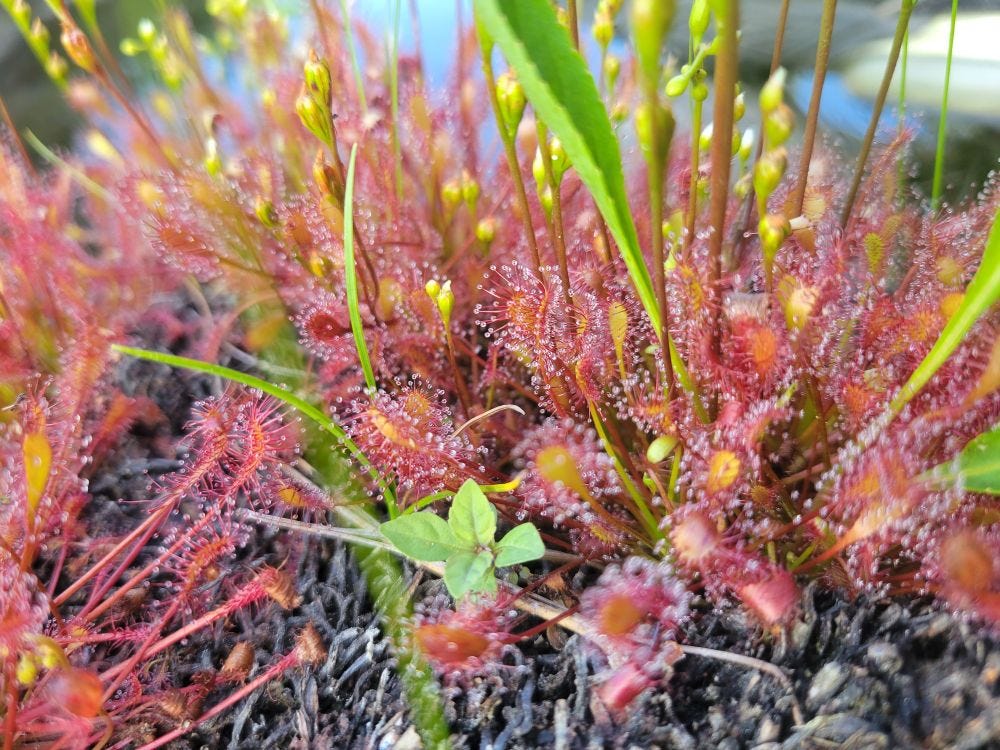Seeing the Forest for the Trees
How fire could help manage fire in Sumatra, Indonesia. At the end, a photo of carnivorous bog plants dripping with nectar to entice unassuming insects.
Unlike the prescribed burns used to clear fire-fueling brush in forests of the southeastern United States, fires rolling through the wetlands of southern Sumatra, Indonesia degrade the landscape and threaten community livelihoods. Fires are started to aid with rice cultivation, clear paths to logging or grazing sites, and for various other reasons. Their regular occurrence has converted mature swamp forests into open savannas, grasslands, and stands of fire-resistant paper bark tree, reducing vegetation biodiversity.
According to research led by scientists at the Center for International Forestry Research, growing industry presence and large-scale developments on the island of Sumatra have brought more people. Consequently, people have more contact with formerly isolated wetlands, and their flammability is increasing. Land cover degradation has reduced opportunities for logging and fishing, placing even more emphasis on the production of rice and paper bark, while shrinking incomes and alternative career paths. Increasingly frequent extended droughts in the wetlands of southern Sumatra, which already experiences a drier climate than its northern counterpart, further pushes farmers towards low-maintenance rice production. After resources are extracted from one area, people turn to adjacent forests.

When peat soil burns for weeks like it did across the country during the El Niño and southeast Asian drought of 1997-1998, the carbon released can equal as much as 40% of annual fossil fuel emissions, visually represented by the blanket of gray smoke that settled over the region. Intense and widespread fires such as these deplete nutrients, induce acid sulphate soils, and transform landscapes on a large scale. Uncontrolled fires can be indicators of more detrimental catalysts, like commercial logging, wetland draining, plantation establishment, and mass movement of people.
Prescribed burns actually offer benefits. They generate space for new growth in the understory by scaling back trees and shrubs, produce diverse habitats, and limit the spread of invasive species and pests. Trees invest more nutrients into storage and bark thickness after fire and flooding to build their fire resistance. Furthermore, leaf dry matter content shows that most flooded environments become less fire-prone after fires.
Detailed analysis of land cover classification, land management practices, fire patterns, and other factors shows that people have adjusted quickly to shifting resources and opportunities, and their limitations in South Sumatran landscapes. However, there now exists a feedback loop between wetlands & fire use. Fires initiated to prepare savannahs for rice production can spread and shrink or degrade wetlands. These changes prompt struggling fishermen and others dependent on wetland crops to embrace logging, which deforests and transforms the remaining wetlands. Fires used to clear paths or fields spread easily to surrounding habitats. The process then repeats.

Peatland degradation must not be allowed to accelerate until it reaches a tipping point characterized by fire-prone environmental disasters, declining economic returns, and an inhospitable climate. Solutions that prohibit fire, reform the migratory labor system in Sumatra, or enhance livelihoods by connecting people to the country’s growing oil palm industry are complex and unreliable.
Simpler changes that could reduce uncontrolled fires might include prescribed burning, wetland restoration, conversion of plantation forestry to agroforestry, or government incentives for improved environmental management by local communities and industries. Other fire management techniques could involve careful reintroduction of ecosystem engineers, like Eurasian beavers, which increase open water area by slowing surface water flows; removing misplaced species that erode wetlands, like Louisiana’s nutria; or co-management of forest resources. One example is the collaboration between the Nature Conservancy and local Klamath Tribes, which helped to weaken flames at the Sycan Marsh Preserve during Oregon’s Bootleg fire in 2021.
“An upriver people, the Karuk identify with the Klamath and the many steep, rugged, and remote watersheds that feed it. Fire is of great importance... Burning is an important part of tribal culture, and is equal to the river in its importance in traditional life and sacred ceremonies.”
Success Stories from the Western Region by Bill Tripp
Co-management in Sumatra could bring together forest stakeholders from transmigrant communities, government, industry, local residents, and Indigenous peoples like the Suku Anak Dalam. Sparse financial resources and uncertain leadership previously hindered innovative programs like the forest management unit initiated in Sulawesi, Indonesia back in 2009. But a second attempt could be just what is needed.
Hot off the Peat
Investors are hesitant to take a risk on blue carbon. Author of Humans: Keystone Species, Neal Spackman, shares difficulties fronting money for a mangrove restoration project, despite public commitments from potential customers and abundant online hype for nature-based climate solutions from scientists and stakeholders alike.
Marine Protected Areas co-managed by non-government actors have more fish. Out of 127 study sites with data from “no-take zones” where fishing is prohibited, the majority are governed solely by the state, but a recent analysis suggests that should change. Fish biomass is higher in older protected areas, no-take zones, and areas with shared governance.
Read an interview of software developer, consultant, and birder Joe Weiss. Pandemic boredom inspired him to write a python program that helps detect and classify bird noises called birdnetlib. It has since gained the attention of scientists at California nonprofit, The Institute for Bird Populations, and led to more collaborative projects.
Listening on Re-peat
Three leading experts share how to spot symptoms of avian flu in wild birds on the Ducks Unlimited podcast. Although the first avian influenza-related death was reported in the United States this year, with advances in disease detection, current public health is not believed to be at risk. However, ongoing research on virus mutation and transmission from animals to humans is crucial.
Wetland Area Photos Of the Week (WAPOW!)





Found this article very interesting. I wonder if Cali could introduce or build new wetlands to help fend off wildfires?